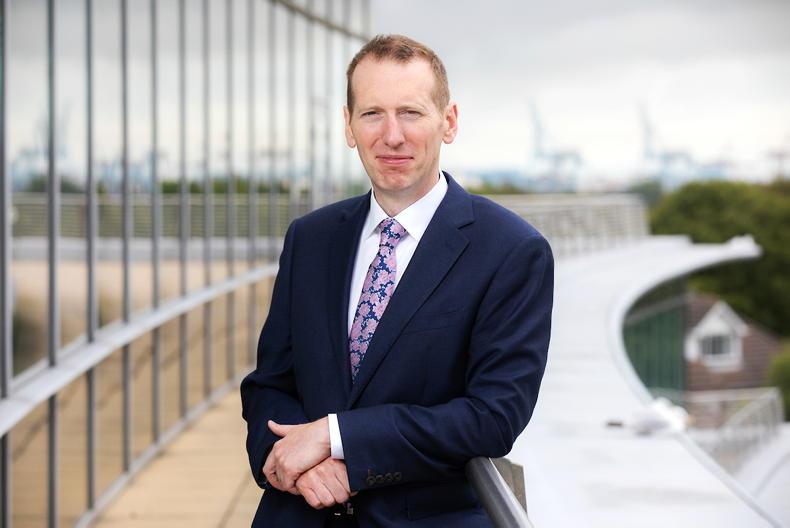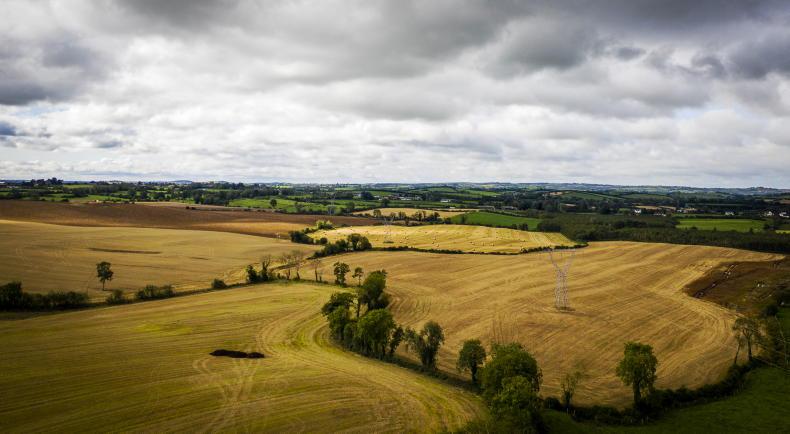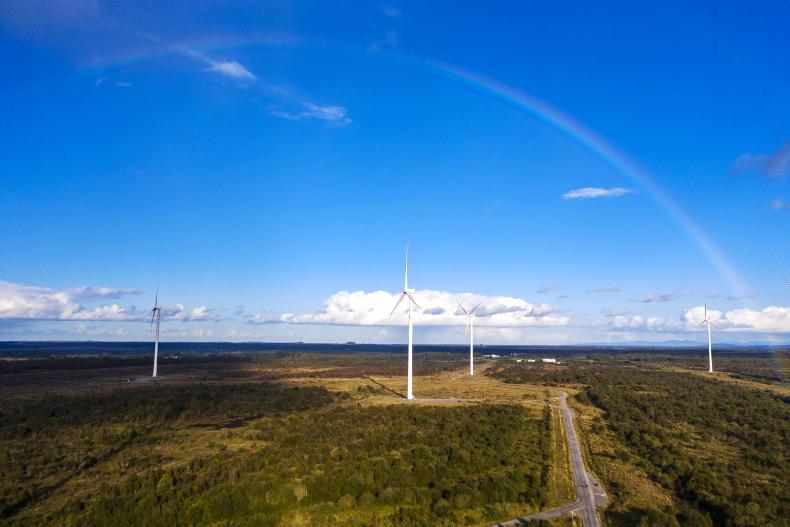Under the Climate Action Plan, 70% of electricity use must come from renewable sources by 2050.
This ambitious target is a stepping stone to hitting net-zero by 2050 and achieving a sustainable energy network.
This will be met largely through major onshore and offshore wind farm developments as well as solar farms.
While Government supports such as the Renewable Electricity Support Scheme are in place to make this happen, one issue that is often overlooked in the renewable energy conversation is Ireland’s electricity grid infrastructure.
In order to meet our binding 2030 target, in excess of 10,000 megawatts (MW) of renewable energy will be added to our grid, coming from renewable sources all around the country. As it stands, however, much of our grid infrastructure is not capable of accommodating this.
To allow electricity be transported from where it’s generated to where it’s used, significant grid upgrades are needed.

Grid infrastructure criss-crosses throughout the Irish farming landscape.
The job of increasing our grid capacity lies with EirGrid, the semi-state body which operates and develops Ireland’s national electricity grid.
EirGrid is undertaking a nationwide consultation to help inform how it will develop the grid over the next 10 years.
The consultation is important to our readers as any infrastructure upgrades or construction of new infrastructure will likely cross farmland.
The consultation will give you an opportunity to shape the direction upgrade works and influence the location of future infrastructure.
To explore this further, this week the Irish Farmers Journal spoke to Michael Mahon, chief infrastructure officer at EirGrid.

Michael Mahon, chief infrastructure officer at EirGrid.
The options
Michael said farmers and members of the public are being urged to take part in the consultation as it is vital to get their views.
There are four approaches put forward in the consultation as to how the grid will be upgraded.
1 Generation-led: Government policy would influence where renewable energy is generated, favouring locations where the grid is already strong. This approach would favour offshore wind projects in the east and solar projects in the southeast. The upgrade works would cost around €0.7bn, and could bring around 38 projects on stream.
2 Developer-led: in this approach, EirGrid continue to connect new sources of renewable electricity as requested in any location around the country. It is estimated that developer-led locations could bring 77 projects on stream with a likely bill of €1.9bn to complete the upgrade works.
3 Technology-led: this approach aims to try new ways to move electricity across the country. The approach will use high-capacity underground direct-current (DC) cables to move power from wind and solar farms in the west to east coast cities where more power is needed. Around 46 projects could come on stream with this approach, with the upgrade works costing around €1.5bn.
4 Demand-led: this approach aims to locate large electricity users close to sources of clean electricity generation. This means Government policy would mandate that new data centres and other high-demand users would locate near major towns and cities in the west and south, close to wind and solar farms. The approach would lead to about 41 new projects and cost around €0.5bn. It also encourages decentralisation of business from the east, which would improve the economic fortunes of western regions.
EirGrid’s consultation material can be found on consult.eirgrid.ie

Why should a farmer take part?
The north-south interconnector, the Laois-Kilkenny reinforcement project, the Kildare-Meath grid upgrade and the north Connacht 110 kV project are just a handful of grid projects which have made their way to the public eye in recent years. Each of these projects have had extensive consultations to work through the challenges. However, it is inevitable that there will be more projects in the pipeline. The general location of these upgrade works will be determined on the outcome from the consultation. EirGrid stresses that it is keen to hear feedback on the proposed approaches from farmers in particular as the work will be carried out on farmland.
Michael says that where infrastructure such as pylons, below-ground cables, substations or any other assets are located on farmland, they aim to work closely with the landowners on the proposed work. In many cases, farmers are compensated for the economic loss caused by grid infrastructure work.
Under the Climate Action Plan, 70% of electricity use must come from renewable sources by 2050.
This ambitious target is a stepping stone to hitting net-zero by 2050 and achieving a sustainable energy network.
This will be met largely through major onshore and offshore wind farm developments as well as solar farms.
While Government supports such as the Renewable Electricity Support Scheme are in place to make this happen, one issue that is often overlooked in the renewable energy conversation is Ireland’s electricity grid infrastructure.
In order to meet our binding 2030 target, in excess of 10,000 megawatts (MW) of renewable energy will be added to our grid, coming from renewable sources all around the country. As it stands, however, much of our grid infrastructure is not capable of accommodating this.
To allow electricity be transported from where it’s generated to where it’s used, significant grid upgrades are needed.

Grid infrastructure criss-crosses throughout the Irish farming landscape.
The job of increasing our grid capacity lies with EirGrid, the semi-state body which operates and develops Ireland’s national electricity grid.
EirGrid is undertaking a nationwide consultation to help inform how it will develop the grid over the next 10 years.
The consultation is important to our readers as any infrastructure upgrades or construction of new infrastructure will likely cross farmland.
The consultation will give you an opportunity to shape the direction upgrade works and influence the location of future infrastructure.
To explore this further, this week the Irish Farmers Journal spoke to Michael Mahon, chief infrastructure officer at EirGrid.

Michael Mahon, chief infrastructure officer at EirGrid.
The options
Michael said farmers and members of the public are being urged to take part in the consultation as it is vital to get their views.
There are four approaches put forward in the consultation as to how the grid will be upgraded.
1 Generation-led: Government policy would influence where renewable energy is generated, favouring locations where the grid is already strong. This approach would favour offshore wind projects in the east and solar projects in the southeast. The upgrade works would cost around €0.7bn, and could bring around 38 projects on stream.
2 Developer-led: in this approach, EirGrid continue to connect new sources of renewable electricity as requested in any location around the country. It is estimated that developer-led locations could bring 77 projects on stream with a likely bill of €1.9bn to complete the upgrade works.
3 Technology-led: this approach aims to try new ways to move electricity across the country. The approach will use high-capacity underground direct-current (DC) cables to move power from wind and solar farms in the west to east coast cities where more power is needed. Around 46 projects could come on stream with this approach, with the upgrade works costing around €1.5bn.
4 Demand-led: this approach aims to locate large electricity users close to sources of clean electricity generation. This means Government policy would mandate that new data centres and other high-demand users would locate near major towns and cities in the west and south, close to wind and solar farms. The approach would lead to about 41 new projects and cost around €0.5bn. It also encourages decentralisation of business from the east, which would improve the economic fortunes of western regions.
EirGrid’s consultation material can be found on consult.eirgrid.ie

Why should a farmer take part?
The north-south interconnector, the Laois-Kilkenny reinforcement project, the Kildare-Meath grid upgrade and the north Connacht 110 kV project are just a handful of grid projects which have made their way to the public eye in recent years. Each of these projects have had extensive consultations to work through the challenges. However, it is inevitable that there will be more projects in the pipeline. The general location of these upgrade works will be determined on the outcome from the consultation. EirGrid stresses that it is keen to hear feedback on the proposed approaches from farmers in particular as the work will be carried out on farmland.
Michael says that where infrastructure such as pylons, below-ground cables, substations or any other assets are located on farmland, they aim to work closely with the landowners on the proposed work. In many cases, farmers are compensated for the economic loss caused by grid infrastructure work.









 This is a subscriber-only article
This is a subscriber-only article










SHARING OPTIONS: